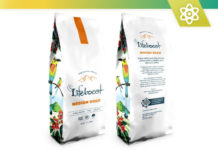Managing blood sugar levels is crucial for maintaining long-term health, particularly for individuals with diabetes. Effective control of blood glucose can prevent or delay complications, enhance quality of life, and reduce the risk of heart disease, stroke, kidney failure, and other severe conditions. This article explores various strategies to help manage blood sugar levels comprehensively, encompassing dietary choices, physical activity, sleep, and other lifestyle modifications.
Understanding the intricate balance required to maintain optimal blood sugar involves recognizing the roles of different foods and lifestyle habits. Various foods have distinct impacts on blood sugar; integrating appropriate choices into your diet can make a significant difference. Other factors such as exercise, sleep, and meal timing also play pivotal roles in blood glucose management.
Dietary Choices for Blood Sugar Management
Unsweetened or Plain Yogurt
Unsweetened or plain yogurt, particularly Greek yogurt, is an excellent choice for those managing their blood sugar. It is rich in probiotics that support gut health and high in protein, which helps manage hunger and maintain muscle mass. Studies have shown that probiotic yogurt can lower fasting blood sugar and hemoglobin A1C levels in people with type 2 diabetes. Incorporating plain yogurt topped with berries and nuts can be a delicious and healthy way to start the day.
Blueberries
Blueberries' health benefits are well-documented. They are associated with improved hemoglobin A1C and triglycerides, particularly in individuals with type 2 diabetes. A cup of blueberries provides nearly 4 grams of fiber, essential for slowing carbohydrate absorption and stabilizing blood sugar levels. Additionally, blueberries are rich in vitamin C and magnesium, making them a nutritious and filling snack or smoothie ingredient.
Beans
Beans are a powerhouse of nutrients and perfect for blood sugar management. They are packed with vitamins, minerals, and a high fiber content, which helps slow digestion and stabilize blood glucose levels. Kidney, pinto, and black beans are excellent alternatives to meat for meeting protein needs without the added fat. Including beans in dishes like chili or tacos can enhance the nutritional value of meals while aiding blood sugar control.
Leafy Greens
Dark leafy greens such as spinach and kale are incredibly beneficial for managing blood sugar. These greens have low glycemic index values and are abundant in fiber and vitamin C. Their versatility allows them to be used in salads, smoothies, or as substitutes for lettuce. Incorporating leafy greens into your diet can help maintain consistent blood sugar levels and provide numerous health benefits.
Dates
Dates have a lower glycemic index than other dried fruits, making them a good choice for satisfying a sweet tooth without causing significant blood sugar spikes. Each date contains about 1.5 grams of fiber, and when paired with a protein like natural peanut butter, they make for a filling and nutritious snack. Moderation is key, as dates are still high in natural sugars.
Glucerna® Shakes and Bars
For those with busy lifestyles, Glucerna® shakes and bars offer a convenient way to manage blood sugar. These products are formulated with slow-release carbohydrates to help minimize blood sugar spikes, making them a bright, portion-controlled choice for snacks or meal replacements. Keeping a few on hand can ensure you have a healthy option available even on the busiest days.
Steel-cut Oats
Steel-cut oats are an excellent breakfast option for blood sugar management due to their high fiber content. A quarter cup of dry steel-cut oats contains about 4 grams of fiber, which can help slow carbohydrate absorption and prevent sudden spikes in blood sugar. Adding seeds or nuts and minimizing added sugars can further enhance their nutritional profile.
Mushrooms
Mushrooms benefit blood sugar control, particularly portobello, shiitake, and cremini. They contain high concentrations of beta-glucans, a type of fiber that can lower blood glucose response. Mushrooms also have a low glycemic index, making them a versatile and healthy addition to various dishes. Try a grilled portobello mushroom for a nutritious alternative to a beef patty.
Onions
Onions have been revered for their medicinal properties for thousands of years. They are low-carb vegetables easily incorporated into various meals to help manage blood sugar. Onions contain quercetin, an antioxidant with anti-inflammatory properties, making them a valuable addition to any diet. Adding chopped raw onions to salads or tacos can provide a fresh and flavorful boost.
Millet
Millet is an underrated grain with a lower glycemic index than rice or wheat. This gluten-free grain is high in fiber and can be used in various dishes. Using millet as the base for a veggie bowl instead of rice or quinoa can provide a nutritious, blood sugar-friendly alternative.
Lifestyle Strategies for Blood Sugar Control
Exercise
Regular physical activity plays a significant role in blood sugar management. Exercise increases the muscles’ capacity to take in sugar from the blood, which helps regulate blood glucose levels. Engaging in various forms of exercise, from high-intensity workouts to low-intensity activities like walking and gardening, can improve blood sugar control. Even short bursts of high-intensity exercise can have lasting effects, improving blood glucose levels for up to three days.
Sleep
Adequate sleep is essential for effective blood sugar management. Studies have shown that individuals who do not sleep well experience higher blood sugar levels after breakfast, particularly when consuming sugary foods. Going to bed early and maintaining a consistent sleep schedule can significantly improve blood glucose control. Opting for protein-rich breakfasts instead of refined carbohydrates can help mitigate the impact of poor sleep on blood sugar levels.
Fiber Intake
A diet rich in fiber is beneficial for blood sugar control. Soluble fiber, in particular, forms a gel-like substance that slows digestion and the movement of sugar into the bloodstream. This effect can extend to subsequent meals, known as the “second-meal effect.” Increasing fiber intake can be as simple as incorporating more fruits, vegetables, whole grains, and legumes into your diet. To prevent digestive discomfort, drinking plenty of water is crucial when consuming high-fiber foods.
Meal Timing
The timing of meals also plays a crucial role in blood sugar management. Research suggests that eating dinner earlier, such as at 6 p.m., can result in better blood sugar control than eating later. Ending meals earlier allows the gut to recover overnight, supporting overall gut health and enhancing blood sugar regulation. Establishing a consistent meal schedule and avoiding late-night eating can help maintain stable blood sugar levels.
Conclusion
Managing blood sugar levels effectively requires a multifaceted approach that includes intelligent dietary choices, regular physical activity, adequate sleep, and careful meal timing. Incorporating nutrient-rich foods such as unsweetened yogurt, blueberries, beans, leafy greens, and low-glycemic grains like millet can help maintain stable blood glucose levels. Additionally, regular exercise, ensuring sufficient sleep, and appropriately timing meals can further support blood sugar management.
By implementing these strategies, individuals can take proactive steps towards better blood sugar control, reducing the risk of complications and enhancing overall health and well-being. These comprehensive approaches provide a well-rounded plan that aligns to maintain optimal blood sugar levels and promote a healthier lifestyle.
For more information on managing blood sugar through diet and lifestyle, visit Abbott Nutrition News and ZOE.













![Bowflex Max Total: 2024 Fitness Workout Exercise Machine [Review] Bowflex Max Total: 2020 Equipment Review For Complete Upper and Lower Body Workout](https://www.advancedliving.com/wp-content/uploads/2019/12/Bowflex-Max-Total-218x150.jpg)


